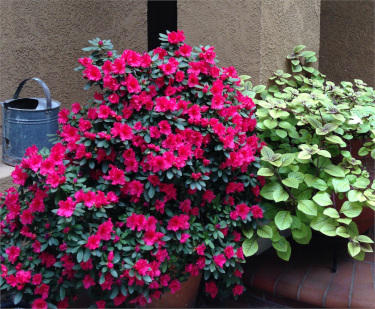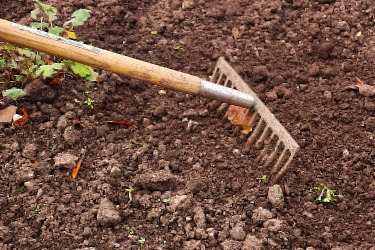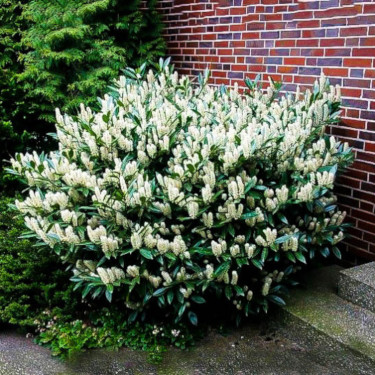How To Plant Garden Shrubs
Gardeners have an almost endless selection of different varieties of garden shrubs. Whether you desire evergreens, flowering types, those producing colorful foliage or that grow tall or short, there is a shrub meeting your needs. Although all shrubs are planted in much the same way, this planting guide assists in planting and spacing them correctly so they give you years of healthy growth and enjoyment. Continue reading because we take all the mystery out of planting your garden shrubs correctly and having them thrive in their location in your garden.
In a Nutshell
– Remove all packaging
– Water the shrub in its pot
– Choose a suitable planting site based on the needs of your shrub
– Prepare the soil
– Place your shrubs on the ground and decide their exact positions
– Dig a hole the depth of the pot
– Put the shrubs in their holes and replace most of the soil
– Water well, let the water drain and put back the rest of the soil
– Put mulch around your shrubs and water weekly for the first season
Getting Your Shrubs Ready to Plant

Care Before Planting
It is normal for your shrubs to be a little frazzled from their journey to your house. The best thing you can do for them is place them in a shady location and give them a drink of water. Even if the weather is cold, do not situate your shrubs in an indoor location such as the garage, shed or your home.
Your shrubs will reside quite happily inside their pots until you are ready to plant them, provided you water them regularly. Feel the top inch of soil in the container and if it is dry, give the shrub water. Depending on your particular shrub’s light requirements and once they have adjusted to their new location, you can move them to a brighter location after several days. Just remember to keep them watered until you are ready to plant.
Choosing a Planting Location
When selecting the proper location for your shrubs, you want to choose a permanent location so you do not have to move them in the future. Consider what each particular variety of shrub’s light requirements are when choosing an appropriate location. You do not want to plant a shrub in a site that receives full sun all day if the shrub prefers a partially shady location or the foliage will burn and the shrub will not grow properly.
If you are using your shrubs as a privacy screen or windbreak, which is different that growing a hedge, we have special planting guides that give you tips in properly planting them so they grow to their full potential. The major difference between a hedge and the others is that a hedge is trimmed, whereas shrubs used for privacy screens or windbreaks are allowed to grow to their full potential without constant trimming.
Preparing the Planting Site

The first step in preparing the planting site is to remove any unwanted vegetation that will rob your shrubs of moisture and nutrients, as well as any large rocks in the site. You can remove any weeds or grasses by pulling them out by hand or using a hard rake. If you decide to use an herbicide to kill the unwanted growth, allow the product to work for several weeks and then remove the dead vegetation before planting.
Once you have cleared the site of the unwanted growth, you can amend it with well-rotted manure or compost. Spread about a 6-8 inch layer of the organic material over the site and work it into the soil about 12 inches. This not only makes the site more fertile, but also loosens the soil, which assists the roots in having an easier time spreading out through the area. After amending the site, level the area and you are ready to plant your shrubs.
Preparing the Shrubs
You do not want to plant your shrubs into their new site with a dry root system. Therefore, the night before planting water the container’s soil. This helps get them off to the best start in their new site.
Laying Out Your Shrubs
Before you start digging holes, you will want to lay your shrubs out over the planting site to get the appropriate spacing between them. If you are using the shrubs along a property line, be sure to plant far enough back from your neighbor’s property so your shrubs do not grow over the line, where your neighbor has the right to trim them.
To assist in proper spacing, check our site for your particular shrub’s width at maturity, which gives you a good idea of how wide you can expect your shrubs to grow. If creating a hedge, you do not want to space your shrubs so far apart they will not fill in together, and you do not want to bunch them so close they won’t receive proper air circulation, which creates problems with disease.
A good rule of thumb to follow is taking your shrubs mature width and dividing that number in half. Space multiple shrubs this final distance apart from each plant’s center. For example, if your shrub grows 6 feet wide, space the holes about 3 feet apart. If you are planting next to a structure, use this number as the required distance you need to plant from a house, fence, etc. Once you know the distance between planting holes, position you shrubs on the planting site at the appropriate distance apart. Now you can start digging the holes.
However, for a more informal and natural appearance to the hedge, do not space the shrubs in a direct straight line. Instead, stagger them by planting every other one a little behind or in front of the one next to it.
Digging the Holes
Dig a hole where you have placed each shrub’s container, digging it about two to three times wider than the container and just as deep. If you have dug the hole a bit too deep, you can adjust the depth when you go to plant the shrub.
Removing the Pot
Once you have the planting hole prepared, gently slide the pot off the shrub’s root ball. If the pot seems snug and does not easily slide off, generally, if you tap the sides of the container it releases from the pot. Don’t try to forcefully pull the shrub out of its container or you may cause damage.
However, if it seems like all the soil is going to fall off the root ball when you remove the pot, do not stress because this is normal at times, especially with younger root systems. To keep everything together, you can use a sharp knife and cut away the bottom of the pot. When you plant, you simply place the entire pot in the hole and slice down the side, releasing the shrub from the container with the soil and roots intact.
Planting Your Shrubs

Watering the Shrubs
Before you finish filling the hole with soil, water the planting hole, saturating the root system. Allow all the water to drain from the hole and into the soil before you finishing filing the hole with soil.
Finishing the Planting
Once the water has completely drained from the hole, it is time to finish backfilling the hole with soil. Firm the soil up around the shrub’s base by pressing down with your hands or foot, making sure it’s not planted deeper than it was original growing. Planting too deep puts undue stress on the shrub and can impede its growth. Make sure the site is level so water does not drain away from the root system.
To help the soil retain moisture and cut down on unwanted growth from weeds and grasses, apply a 3-4 inch layer of organic mulch over the planting site, being sure not to let it bunch up against the base of the shrubs. Once you have applied the mulch, water the planting site again to saturate the roots.
Planting in Containers
Some shrubs, especially those that do not grow too big perform quite well in containers and can brighten up a porch or entranceway with their colorful foliage or flowers. If you choose to grow your shrub in containers, it is necessary to follow a few rules to promote the best health and growth possible, which cuts down on potential disease problems.
Select a container that is about one size larger than the one your shrub is presently growing in, as planting in a container that is too large can mean the soil remains too soggy. Make sure the container has bottom drain holes, or the too wet conditions can lead to rot problems and the possible death of your shrub. When it comes to soil, use a fertile, well-drained potting mix and some types have a slow-release fertilizer incorporated into it, which will feed your shrubs for several months.
As with shrubs planted in the ground, water the shrub before planting and do not plant any deeper than it was originally growing. Place the container in a location with the appropriate light conditions and water when the top inch of soil becomes dry to the touch. During the growing season of spring through summer, using a water-soluble, liquid plant food is usually sufficient in giving the shrub the nutrition it requires for good growth.
Follow-up Care of Shrubs
It can take two to three months or more for the shrub’s root systems to establish themselves in their new planting site and good care during this time is essential for good growth. During the shrub’s first few months of growth, water twice weekly. Thereafter, and depending on your local weather conditions, plan to water the shrubs with a deep soaking weekly.
However, if your conditions are hot and dry, you may have to water several times each week. Planting the shrubs in an appropriate planting site with good conditions means your shrubs will reward you with years of robust and healthy growth. It’s time well spent for a reward of greenery.